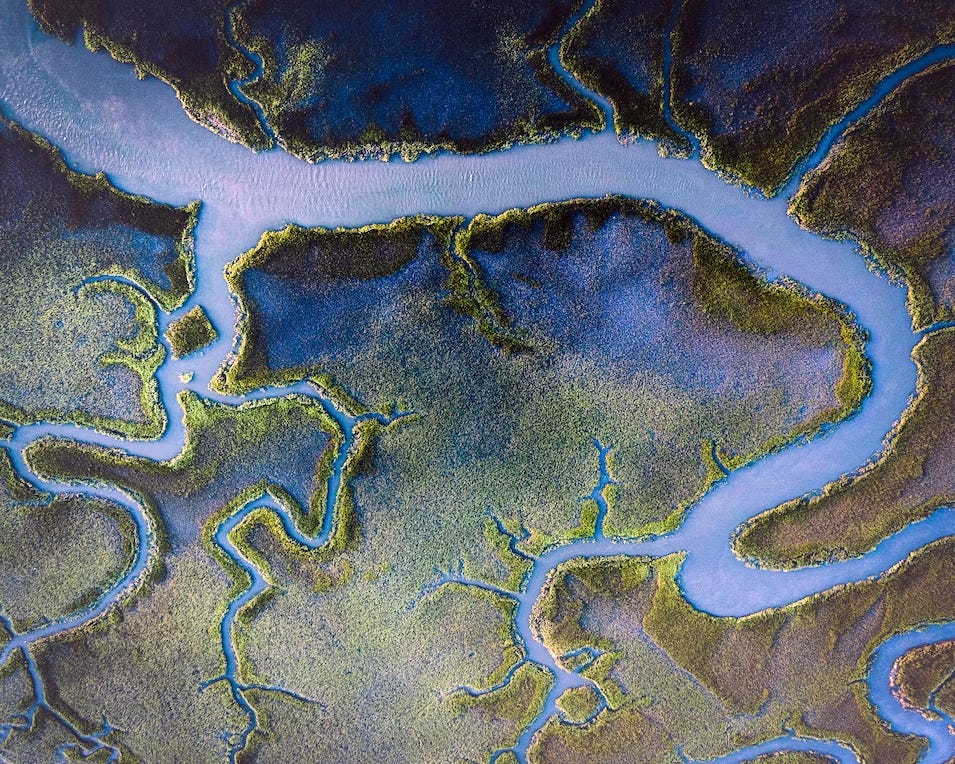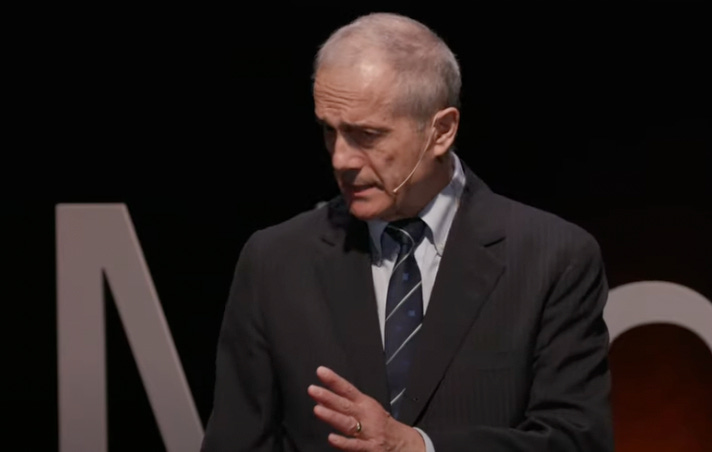The Law of Flow is Everywhere
Once You See Bejan's Constructal Law in Action, You Will Always See It
The despot is not a man. It is the Plan. The correct, realistic, exact plan, the one that will provide your solution once the problem has been posited clearly, in its entirety, in its indispensable harmony. - Le Corbusier
Adrian Bejan is a Romanian-American who grew up under Nicolae Ceaușescu’s brutal central planning regime. Trained in mechanical engineering, Bejan somehow bridged his love of physics and his yearning for freedom. He never lost that yearning after 1989—the year the Romanian people removed Ceaușescu.
Six years later, flying back to the US after attending a conference in France featuring the esteemed Ilya Prigogine, the penny dropped for Bejan.
It niggled Bejan that Prigogine had claimed the branching of dissipative structures is coincidental. But Bejan’s consternation and some cabin pressure led to an idea:
The universal tendency of flow systems is to morph into evolving configurations that provide greater and easier access over time.
Bejan’s now-famous “constructal law” operates in all living systems on earth. Its tell-tale sign is vascularization. Just imagine how the following systems are configured:
River systems with tributaries, streams, and brooks.
Human bodies with hearts, veins, and capillaries.
Transportation systems with highways, roads, streets, and alleyways.
Trees with trunks, limbs, branches, and twigs.
Firms as large, medium, and small businesses.
All living systems, to continue living, have to accommodate energy flows.
The beauty of Bejan’s Law of Flow is that it explains the form and function of living systems in physical terms.
I appreciate the Law of Flow enough to open After Collapse thus:
In the Amazon, far below the rainforest canopy, a network of roots stabilizes a thick trunk. Mirroring the branches and twigs among the leaves above, the roots below split into smaller roots, which split into yet smaller roots, extending outward to absorb water. All that water gets stored in the tree's cells.
A few miles away, a mighty river rushes. The river carries watercraft and fish, a few large and many small, inexorably toward a delta. What feeds the great river are smaller rivers, Apurimac and Mantaro, then tributaries, which are fed by streams, which are fed by brooks, which are fed by sources high in the Peruvian Andes.
Navigating the river early in the morning, an old woman goes fishing. Her body contains a system of veins and arteries that carry blood, enriched or depleted, to nourish every cell in her body. Likewise, her brain and limbs are animated by information signals within a network of nerves. These signals have to be processed by an organ of fractal complexity, or the old woman will be unable to navigate much less fish.
Everywhere in the world, we see these sorts of living systems. They display the property researchers Adrian Bejan and Sylvie Lorente refer to as "few large, many small.” This stunning vascularization of everything means that even inorganic systems can have a kind of life, where life is defined as accommodating currents of flow and change. Living systems are thus flow systems. And if a system is no longer able to deal with currents of flow and change, it dies.
We can say the same of human systems. To the extent that a human system can accommodate flow is the extent to which it will persist in time--that is, to live. In some fundamental sense, this idea, strange and wonderful, is the guiding idea of this work.
This framing, of living systems as flow systems, has everything to do with collapse and renewal.
If Bejan is right, this is one of the world's most important—and, indeed, undeniable—features. It bundles Hayek's insights, Mandelbrot's mathematics, and Darwin's biology to a new, unified theory.
But how?
First, it means that evolution has directionality. That is to say, there is a tendency for systems to evolve in certain ways over time. This extends Darwinian evolution in ways that have implications for biology and society.
Second, it means that the “fractal” patterns in nature are not random as Prigogine thought. Natural fractals have explanatory backing in constructal theory, as fractal patterns tend to accommodate flow.
Third, market economics has a whole new functional justification rooted in physics. The idea of natural law has been something of a patch-quilt concept for classical liberals in their attempts to justify free markets. Hayekian spontaneous orders are familiar to us and offer a functional justification for free markets. But we can now build on Hayek.
This article by Ephrat Livni offers a concise overview of Bejan’s work as it applies to the distribution of wealth:
Recently [Bejan][ published a paper in the Journal of Applied Physics, arguing that wealth inequality is inevitable because of, and can even be predicted by, constructal law. That’s because the distribution of all things—across the social, political, and economic worlds—is determined by vascular patterns, like those of tree branches or river tributaries, Bejan says. They fork and morph to create new streams, naturally. And, naturally, these branches and tributaries are unequal.
That last point is vital. No living systems are “equal,” but instead evolve in organic hierarchies, that is, vascular systems. Livni continues:
Bejan illustrates that hierarchy is unavoidable using Horton’s law of stream numbers, which says that three to five tributaries emerge over the lifetime of a mother stream. As the mother streams calve and then the next generation of tributaries in turn calves again, uniformity disappears. When Horton’s law’s multiplier is applied to the movement of wealth in a society, Bejan says, even modest complexity—five families in a tiny village, for example—leads to a non-uniform distribution of wealth.
I wouldn’t want to derive an "ought" from an "is," but I do want to argue we have a new set of important reasons for questioning economic interventionists and egalitarians. Smith’s invisible hand designs a vascular flow system.
Interventionists constrict, distort, or destroy economic flows, otherwise developing from the bottom up according to the Law of Flow. If you try to reconfigure a natural system according to some technocratic plan, you will likely kill it—as its vascularization keeps the ecosystem alive.
“Freedom is good for design,” writes Bejan.
Design in this context is a noun, not a verb. Livni, once more, thinks Bejan is an accidental Taoist:
The Tao advises we be like water and flow among currents instead of against them; in the Tao Te Ching, as in the constructal law, accommodating forces and morphing willingly is key to evolution. Resistance constricts flow and blocks growth.





"unifying themes in non-mainstream economics" may be a read you might enjoy. I will dig up a copy. Jack
Regarding "wealth inequality is inevitable", i tend to disagree on how the correspondance to flow systems is applied to justify this argument.
Let's use the analogy of the water cycle, with several subvariants, and start with the easy thought :
1/ Wealth is money and represented by water.
a) People and organizations are waterbeds, size relative to their wealth.
The first thing we notice with this analogy is that water flows; it does not stay in place. Money is currency―current you can see. It is not hoarded or stacked, even in lakes and ponds, and the waterbed does not benefit from an increase of its size―it is just bigger, witness and facilitator of an increased flow of water.
Hence, biomimicry would not show a tendency to keep wealth unused or used for self.
It would instead suggest that actors have different roles allowing for the proper flow of wealth to fulfil "greater" (bigger scale) purposes.
b) People and organizations are ecosystems living off of waterbeds.
i- Maybe they use the water from the waterbeds?
Smaller streams carry less water. Are there less diversity nearby than that nearby a huge river ? Are the species less healthy ? Do they not get enough water to live ?
Not really. Might even be the opposite, as smaller streams are more numerous, closer to each other, have less momentum and stay longer, slower in any given spot, less destructive to the shores, and allow for more variety of water sources for ecosystems, and more collaboration between and within them.
ii- Maybe they use the water coming from the surrounding area, and let through what they don't need to flow into the waterbeds?
In that case, ecosystems near sources and small streams have more (or "free") water naturally available around them, as it is where the cycle starts, yet they do not take it all, and let it flow through. Ecosystems further down the stream, as it gets bigger, might have less surrounding sources of water and only survive from the leftovers of upstream ecosystems (interestingly, this kind of fits with the parasitic attitude of most "wealthy" individuals and organizations).
But let's shift the focus a bit, and naturally segway into what makes more sense : wealth is not money, it is what the money allows to *access* :
2/ Wealth is an ecosystem's capacity to live and share freely within and with others.
a) People and organizations are waterbeds, size relative to their wealth.
_This variant is presented for the sake of completeness, but i believe it unfit for this description of wealth._
Similar to 1.a, waterbeds do not really benefit from more wealth (the health of ecosystems around it). A waterbed only allows to collect water and make it flow, carrying with it possibilities of ecosystem health for the places it goes through, especially for bigger streams further down the streams (crossing deserts for example).
Smaller waterbeds, closer to the source, are actually less "used" for this purpose, but more for collecting and flowing further down where water may be needed.
In both cases, as with in 1/a), this description of people/organizations shows that they would play a role of wealth canal for the greater good, without real self-benefit.
b) People and organizations are ecosystems living off of waterbeds.
If the unequal distribution of wealth was naturally inevitable, ecosystems' health and survival would be terrible near the water sources, and amazingly good the closer we get to the ocean. The argument doesn't stick with the analogy here either.
---
Well, that's an exploration to try and demonstrate through observation and logic my unease to consider that the natural laws of life, love and the universe say « It's inevitable and natural that there are poor survival-mode people and obscenely rich people using the poor's lifeforce for their own benefit of comfort, control and power. »
Maybe that wasn't the argument though, and i missed the point. But i enjoyed the exercice.
And even then, i haven't looked at the analogy the other way around : rich near the source, poor near the ocean. It would somewhat illustrate the trickling down of debt-money, but still show careless waterbeds and healthy ecosystems all around, as long as... there is no conscious, designed blockage and redirections, as we know there is.
Cheers!